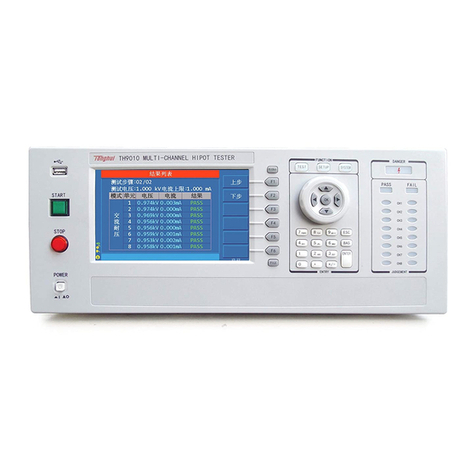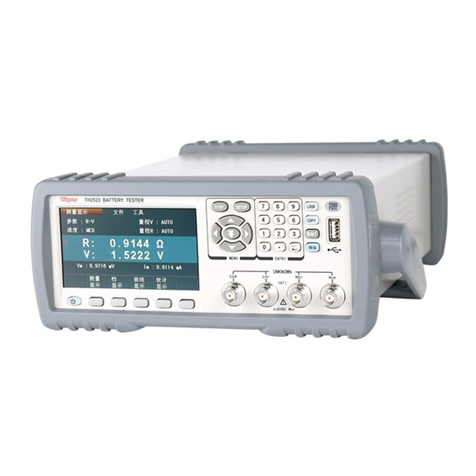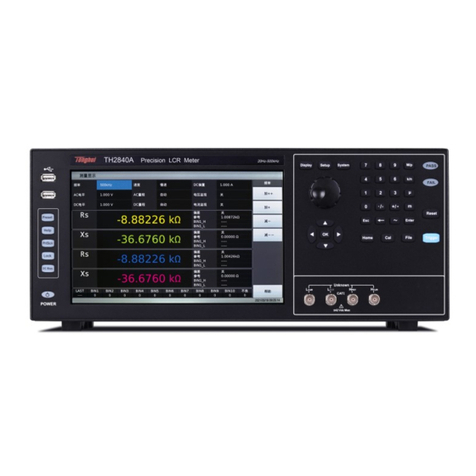
◇4
Chapter 4 Basic operation................................................................................................................................22
4.1 Interface structure overview .....................................................................................................................22
4.2 Instruction of panel function interface and parameter ..............................................................................23
4.2.1 SETUP...............................................................................................................................................24
4.2.2 TEST (Take AC for example) ............................................................................................................25
4.2.3 SYSTEM............................................................................................................................................25
4.2.4 FILE...................................................................................................................................................27
4.3 Test item interface and parameter setup ...................................................................................................29
4.3.1AC withstanding voltage test parameter setup:...............................................................................29
4.3.2 DC withstanding voltage test parameter setup :.................................................................................30
4.3.4 Open and short detection (OS) parameter setup:............................................................................31
4.3.5 MF (multi-channel follow) ................................................................................................................32
4.3.6 CK (multi-channel contact check) .....................................................................................................33
4.4 Test function theory and instruction.........................................................................................................34
4.4.1 Start up test ........................................................................................................................................35
4.4.2 Test delay...........................................................................................................................................35
4.4.3 Test voltage rise .................................................................................................................................35
4.4.4 DC RAMP..........................................................................................................................................35
4.4.5 High-voltage test................................................................................................................................35
4.4.6 Voltage fall.........................................................................................................................................35
4.4.7 Ground wire current detection function.............................................................................................35
4.4.8 Current over limit and arc detection (ARC) function ........................................................................36
4.4.9 Fail judgment.....................................................................................................................................37
4.4.10 Deal with test results........................................................................................................................37
4.4.11 STOP................................................................................................................................................37
4.4.12 OFFSET...........................................................................................................................................37
4.5 SCAN multi-channel structure and use.....................................................................................................38
4.5.1 SCAN parameter................................................................................................................................38
4.5.2 Structure principle..............................................................................................................................38
4.6 Structure and Use of HANDLER and SIGNAL Interface Circuit............................................................39
4.6.1 Control interface theory.....................................................................................................................39
4.6.2 Control interface instruction ..............................................................................................................40
4.7 Other interface and function .....................................................................................................................41
Chapter 5 Serial port commands instruction.................................................................................................42
5.1 SCPI commands........................................................................................................................................42
5.2 DISPlay Subsystem Commands ...............................................................................................................42
5.3 FUNCtion Subsystem Commands............................................................................................................43
5.3.1 FUNCtion subsystem commands--mainly used to set the test parameters of test function ...............43
5.3.2 Commands for PROG Function.........................................................................................................43
5.3.3 Commands for AC Setup Function....................................................................................................44
5.3.4 Commands for DC Setup Function....................................................................................................47
5.3.5 Commands for IR Setup Function .....................................................................................................49
5.3.6 Commands for OS Setup Function ....................................................................................................51
5.4 SYSTem Subsystem Commands ..............................................................................................................52



































